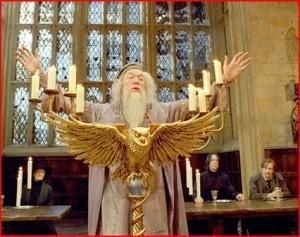There is a great deal of magic in religion. So much in fact that most anthropologists have rejected the idea that there is any principled distinction between magic and religion. For many, this may be hard to swallow and the rejoinder would be: What Criss Angel does is magic whereas what the Pope does is religion. This is true, but only if we use relatively recent definitions of “magic” and “religion.”
Today we designate professional-deception-for-entertainment-purposes as “magic.” By this modern and restricted definition of “magic,” the difference between what Angel does and what the Pope appears real. But the distinction becomes more difficult if we compare the Pope with those who take their magic seriously and actually believe in it.
How does the Pope’s incantation differ from the shaman’s? Why do we say that the Catholic exorcist is practicing religion whereas the Voodoo priest is practicing magic? How does the supplication of saints differ from the supplication of sprites? If the alleged difference depends on doctrinal preferences and judgments, it’s no distinction at all.

The fuzziness or non-existence of the boundary between magic (of the non-entertainment variety) and religion makes sense if we consider the issue historically. The world’s first magicians were shamans. This magic was of two kinds: deceptive magic and believed magic.
The first (deceptive magic) is what most people today consider magic. It involved sleights of hand, illusions, voice throwing, and similar sorts of trickery. The ethnohistoric literature on shamanism is filled with frank admissions that tricks were used to convince patients that spirits were involved in healing rituals. Few therapies are more powerful than placebo, and shamans knew that the effect would be enhanced if the patients believed tricks weren’t tricks.
The second (believed magic) involved the shaman’s sincere belief that the supernatural and spirit world was real, and that the shaman interacted with it through a variety of means. These means presaged those used in all modern religions: offerings, privations, sacrifices, prayers, supplications, incantations, and rituals.
It has been said that one person’s magic is another person’s religion. This is only partly true, as it refers primarily to this second kind of magic: the sincerely held belief that supernatural is real and that people can interact with spirits and powers. It is less true when referring to the first kind of magic, the intentional trickery. While such trickery is sometimes used in religion, we know it today mostly from professional magicians.
One such magician is Teller, whose tandem act with Penn is a major Las Vegas attraction. In this revealing Smithsonian article, Teller discusses his craft and chides neuroscience for being primitive:
I’m all for helping science. But after I share what I know, my neuroscientist friends thank me by showing me eye-tracking and MRI equipment, and promising that someday such machinery will help make me a better magician.
I have my doubts. Neuroscientists are novices at deception. Magicians have done controlled testing in human perception for thousands of years. But magic’s not easy to pick apart with machines, because it’s not really about the mechanics of your senses.
Magic is an art, as capable of beauty as music, painting or poetry. But the core of every trick is a cold, cognitive experiment in perception: Does the trick fool the audience?
A magician’s data sample spans centuries, and his experiments have been replicated often enough to constitute near-certainty. Neuroscientists—well intentioned as they are—are gathering soil samples from the foot of a mountain that magicians have mapped and mined for centuries.
My only quibble is that we are not talking centuries but millenia. The first magicians, or shamans, go back at least 40,000 years. Magic is truly ancient.
As magic developed over time, it loosely separated into the deceptive (trickery) and believed (sincere). Yet even this distinction may not hold. Elsewhere in the article, Teller lists the things which make magical illusions work. While Teller’s list speaks to magic-as-deceptive-entertainment, it also seems applicable to sincerely believed magic (or religion):
1. Exploit pattern recognition.
2. Make the secret a lot more trouble than the trick seems worth.
3. It’s hard to think critically if you’re laughing [distracted].
4. Keep the trickery outside the frame.
5. To fool the mind, combine at least two tricks.
6. Nothing fools you better than the lie you tell yourself.
7. If you are given a choice, you believe you have acted freely.
This is a nice bag of tricks for anyone interested in becoming a magician or founding a religion.

